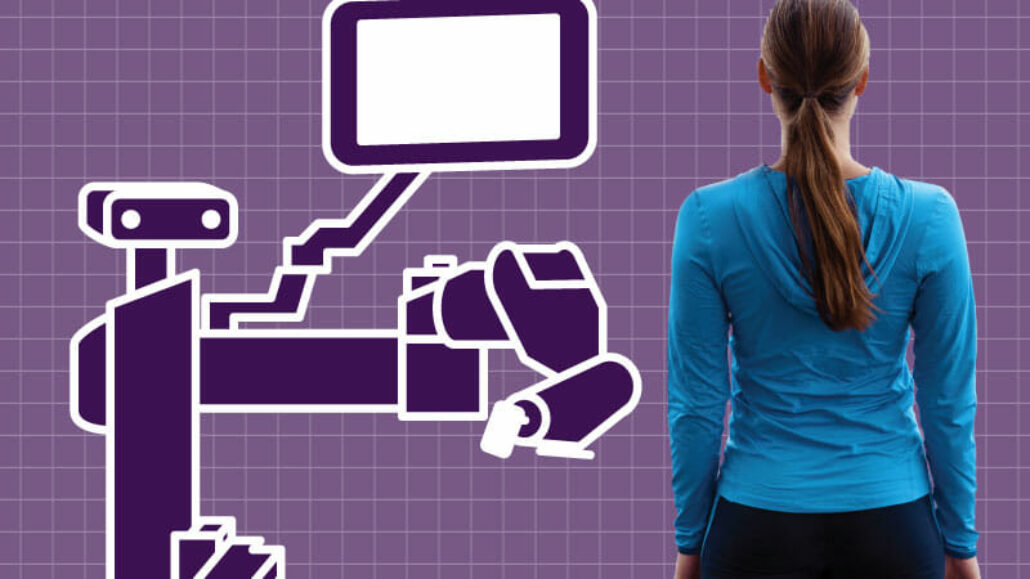Spine surgeon Edward Santos, M.D., recently became the first Summit Orthopedics physician to perform robot-assisted spine surgery using leading-edge technology.
In July, Edward Santos, M.D., one of Summit Orthopedics’ spine surgery experts, performed Summit’s first robot-assisted spinal surgery procedure.
The patient had been suffering with isthmic spondylolisthesis, a spinal condition that can cause pain, numbness, weakness, and tingling in the lower back and buttocks.
“Her condition was twofold: she had pinching in some of the nerves in her back, and she also had instability in her spine. After we exhausted nonsurgical treatments, we chose to solve both problems surgically,” Dr. Santos said. “I performed a decompression to unpinch her nerves and a spinal fusion to stabilize and strengthen her spine, assisted by robotic technology.”
Benefits of robot-assisted spine surgery
The robotic technology helps with planning before the surgical procedure and makes it easier for the surgeon to place rods and screws in the best possible positions during the fusion surgery. Dr. Santos used the Mazor robotic system from Medtronic.
“This is cutting-edge technology for spine surgery,” Dr. Santos said. “It is the way of the future, I believe, and there is a lot of interest from our patients in robot-assisted surgery.”
Dr. Santos is careful to emphasize that the surgeon is in full control during a robot-assisted procedure. “The robot is not the surgeon,” he said. “It is a tool that assists in more precise and accurate placement of the instrumentation — the rods or screws that need to be placed in the patient’s spine.”
Spine surgeons undergo rigorous training to be able to perform surgery with the assistance of the robot. Other members of Summit’s spine surgery team have undergone the training as well and are able to offer robot-assisted procedures when indicated.
Advances in minimally invasive spine surgery
One of the main advantages of the robot-assisted approach is that it allows the surgeon to preplan the position, size, and length of the screws that will be used in the procedure. A day or two before the surgery, the surgeon can use a preoperative CT scan of the spine to plan the trajectory of the screws so that they are in the best possible position.
“It’s very precise and minimally invasive,” Dr. Santos said. “We only make the incisions that are necessary, with minimal disruption of the surrounding tissues.”
The surgery went well, and it look about the same length of time as the nonrobotic, minimally invasive surgical approach. The patient has recovered well from surgery and has experienced relief from her symptoms. Dr. Santos plans to incorporate this technique into his practice moving forward.
Patients interested in robot-assisted surgery should talk with their Summit providers to find out whether they are good candidates for the surgery. “It depends on individual anatomy, so the surgeon must scrutinize imaging and the clinical case, to make sure that this is the right way to go,” Dr. Santos said.
Summit Orthopedics offers comprehensive spine expertise
Our back specialists diagnose spine problems and design custom treatment plans built on a conservative, nonsurgical approach. Most patients find relief through treatments including guided injections, specialized physical therapy, biofeedback, exercise, activity modification, and medication. When conservative care does not relieve symptoms, our highly skilled surgeons offer proven, evidence-based surgical options. Together with you, we will determine the right course of action. Start your journey to a healthy spine. Find your spine expert, request an appointment online, or call us at (651) 968–5201 to schedule a spine consultation.
More resources for you
- Learn about Dr. Santos’ approach to minimally invasive spine surgery
- Check out some spine exercises in our spine exercise library

